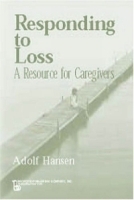| Responding to Loss: a Resource for Caregivers (Death, Value, and Meaning) (Death, Value, and Meaning Series) артикул 5018a. |
 |
Book DescriptionEveryone experiences loss, and learning how to respond to loss is crucial Thats what this book is about It analyzes attachments, breaks in attachments, and responses to the change It makes sense of the processes people go throughwhen confronted with loss The analytical approach of the book is both sequential and cyclical It овкшч describes phases that often occur before the break in an attachment, as well as those that are common after the break At the same time, it identifies the many variations within these phases Although focused on the individual who is experiencing the break, the book recognizes the importance of these events to others, particularly members of the family, friends, and a variety of caregivers For those who learn visually, there are diagrams that summarize and illustrate the points under discussion For those who learn clinically, case examples from real-life situations help illuminate the theory And for those who learn pragmatically, working through the exercises at the end of each chapter will help integrate the topics covered Throughout the book the author attempts to foster an attitude of openness and hopefulness about the future, emphasizing that we have the freedom to respond to whatever happens in life There is always a future, regardless of what has happened! Reading this book, caregivers will find ways to increase their effectiveness by understanding more fully what their care receivers are experiencing, by finding creative ways to assist them in processing what is happening, and by working with them to discern responses to loss that are emotionally healthy, intellectually coherent, spiritually genuine, culturally sensitive, relationally authentic, and personally fulfilling. Автор Владимир2004 г 123 стр ISBN 0895033011. |